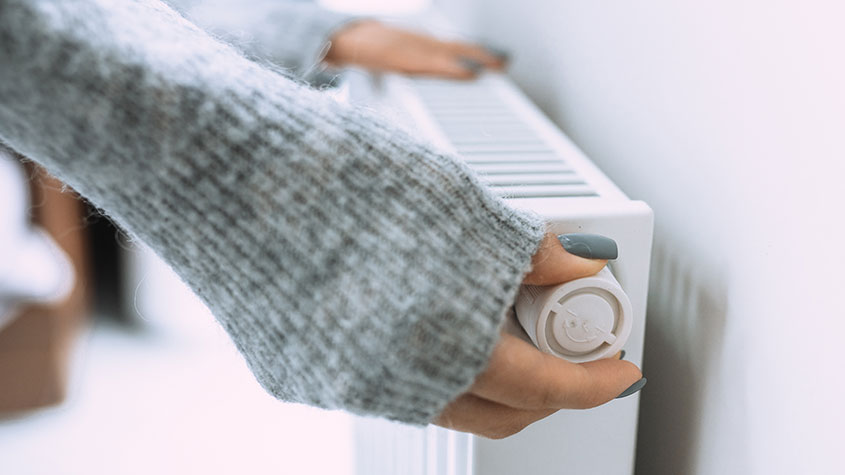Is it cheaper to leave the heating on low all day?
The weather is getting colder and energy bills are rising, but is it really cheaper to leave the heating on low all day or should you only turn it on when you need it?


This time last year households were paying around £1,200 for their energy bills. Now under the Energy Price Guarantee the typical household with average use can expect to pay £2,500 – more than double that amount.
Energy has become more expensive over the last year and prices look unlikely to come down in 2023. What’s for certain is they’ll go up before they come down – the EPG will rise to £3,000 in April, representing a 20% hike from what households are paying now.
But there are things you can do to save money on your energy bill. We’ve compared the cost of fan heaters versus oil heaters and wood burning stoves versus central heating.
MoneyWeek
Subscribe to MoneyWeek today and get your first six magazine issues absolutely FREE

Sign up to Money Morning
Don't miss the latest investment and personal finances news, market analysis, plus money-saving tips with our free twice-daily newsletter
Don't miss the latest investment and personal finances news, market analysis, plus money-saving tips with our free twice-daily newsletter
Now we ask, is it really cheaper to leave your heating on low all day than using it only when you need it?
Should you leave your heating on low all day?
As long as it’s on, your heating is always consuming energy. If you leave it on low all day, the cost will quickly add up and increase your energy bill.
Homes lose heat through windows, walls, doors and even chimneys. If you leave the heating on all day, not only will you be using more energy but more of it will be wasted. However, if your home is well insulated or you want to invest in insulation, you could conduct an experiment.
First, take a meter reading. Then keep your heating on low all day for a week, taking another reading again at the end of the week.
The following week, schedule your heating to come on twice a day. Again, take a reading at the end of the week.
You’ll be left with two different numbers to compare, which will give you an answer. However this is also dependent on the weather.
That said, for most, switching the heating on only when you need will be the better option.
How to keep your home warm
1. Invest in insulation
If you want to test out whether it’s cheaper to leave your heating on at a comfortable temperature, you’ll have to invest in insulation.
Around 25% of the heat from your house escapes through the roof. Padding your loft or attic is a good way to reduce that.
According to the Energy Savings Trust the typical installation cost for insulating a loft with 270mm of loft insulation in a detached house is £890, while the yearly savings are £590. So the insulation will pay for itself many times over the course of its lifetime. If done correctly, it can stay in place up to 40 years.
Additionally the government recently announced an insulation grant scheme which could see people get up to £15,000 to insulate their homes, so this could help you cover the cost.
2. Draught-proof your home
As well as insulating, you could draught-proof your home – doing so could save you an extra £390 a year.
If you have a chimney, consider investing in a chimney sheep. This one from Amazon costs £62. For £10 you could purchase draught tape for your windows, and for an additional £20 you can purchase draught-excluders for your doors.
All together this adds up to around £92. If you decide to get your home professionally draught-proofed, you’d be looking at a bill of £225 for an average three bedroom home.
3. Instal heating controls
If you don’t already have one, you could also instal a thermostat and thermostatic radiator valves. These allow you to control the temperature in your home, programme when the heating comes on, and to decide which rooms you want to heat.
The cost for heating controls is around £580, according to the Energy Savings Trust, and could save you up to £180 a year. Thermostatic radiator valves could save £55 a year.
• This article may contain affiliate links – when you purchase through links on our site, we may earn a commission.
Get the latest financial news, insights and expert analysis from our award-winning MoneyWeek team, to help you understand what really matters when it comes to your finances.
Nic studied for a BA in journalism at Cardiff University, and has an MA in magazine journalism from City University. She has previously worked for MoneyWeek.
-
 Goodwin: A superlative British manufacturer to buy now
Goodwin: A superlative British manufacturer to buy nowVeteran engineering group Goodwin has created a new profit engine. But following its tremendous run, can investors still afford the shares?
-
 Is US stock market exceptionalism over?
Is US stock market exceptionalism over?US stocks trailed the rest of the world in 2025. Is this a sign that a long-overdue shift is underway?
-
 Act now to bag NatWest-owned Ulster Bank's 5.2% easy access savings account
Act now to bag NatWest-owned Ulster Bank's 5.2% easy access savings accountUlster Bank is offering savers the chance to earn 5.2% on their cash savings, but you need to act fast as easy access rates are falling. We have all the details
-
 Moneybox raises market-leading cash ISA to 5%
Moneybox raises market-leading cash ISA to 5%Savings and investing app MoneyBox has boosted the rate on its cash ISA again, hiking it from 4.75% to 5% making it one of top rates. We have all the details.
-
 October NS&I Premium Bonds winners - check now to see what you won
October NS&I Premium Bonds winners - check now to see what you wonNS&I Premium Bonds holders can check now to see if they have won a prize this month. We explain how to check your premium bonds
-
 The best packaged bank accounts
The best packaged bank accountsAdvice Packaged bank accounts can offer great value with useful additional perks – but get it wrong and you could be out of pocket
-
 Bank of Baroda closes doors to UK retail banking
Bank of Baroda closes doors to UK retail bankingAfter almost 70 years of operating in the UK, one of India’s largest bank is shutting up shop in the UK retail banking market. We explain everything you need to know if you have savings or a current account with Bank of Baroda
-
 How to earn cashback on spending
How to earn cashback on spendingFrom credit cards and current accounts to cashback websites, there are plenty of ways to earn cashback on the money you spend
-
 John Lewis mulls buy now, pay later scheme
John Lewis mulls buy now, pay later schemeThe CEO of John Lewis has said the retailer will consider introducing buy now, pay later initiatives for lower-priced items.
-
 State pension triple lock at risk as cost balloons
State pension triple lock at risk as cost balloonsThe cost of the state pension triple lock could be far higher than expected due to record wage growth. Will the government keep the policy in place in 2024?
